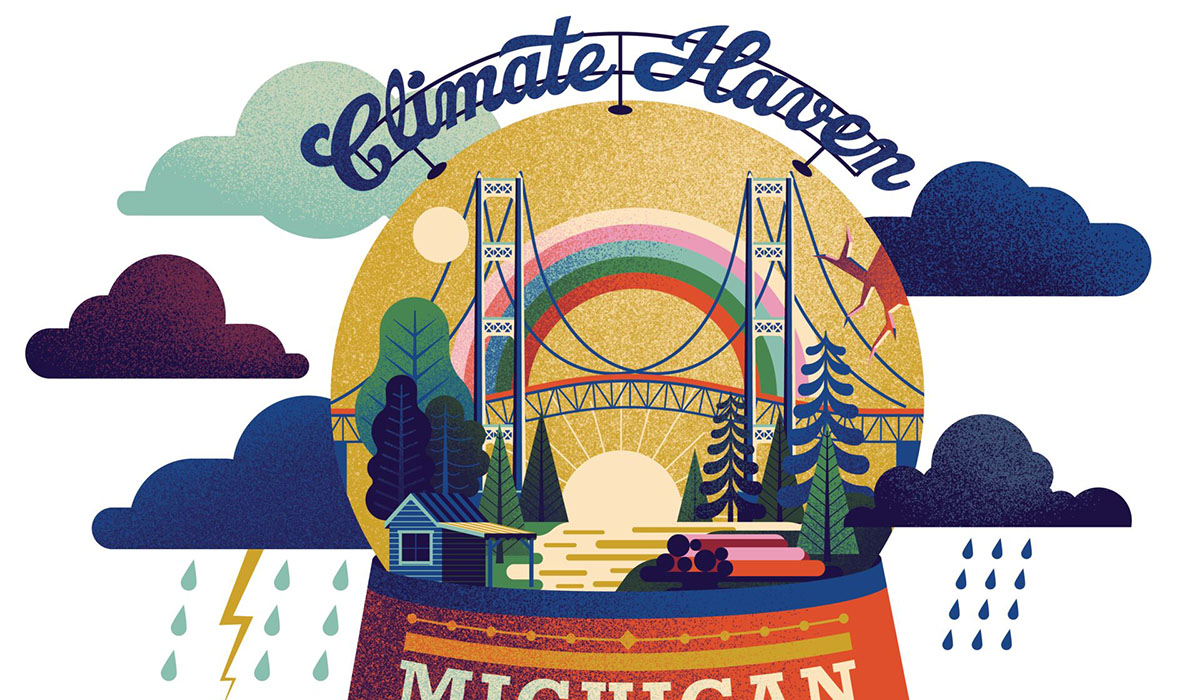Michigan Alumnus spoke with Shelie Miller, an associate professor in the School for Environment and Sustainability and director of the U-M Program in the Environment, about some common misperceptions regarding sustainability.
Because we’re so used to recycling, many of us think packaging causes the greatest environmental impacts. But your research shows the product inside the package generally has a greater impact.
Packaging provides a very visible representation of the environmental impacts of our products. But often, there is a much greater environmental impact associated with other aspects of our products that we don’t tend to think about. For example, the energy, water, and fertilizers that are used to produce food are largely invisible to us. Similarly, the impacts of the energy consumed to wash our clothes or power our devices don’t feel as tangible as packaging waste.
We assume plastic packaging is more harmful to the environment than glass and metal packaging. Is that true?
All packaging has some level of environmental impact, and there are trade-offs associated with each of the various packaging materials. When we look at the materials and energy that are required to produce glass and metal packaging, they are usually much greater than the materials and energy needed to produce plastic packaging. Glass and metal also tend to be much heavier than plastic packaging, which requires more material to produce and more energy to transport. Meanwhile, plastics are made from natural gas distillates and can be responsible for physical damage to ecosystems when not properly collected and disposed of.
Despite these trade-offs, a number of studies on consumer perception have shown that consumers consistently rank metal and glass as more environmentally favorable than plastic. There are a lot of reasons why that may be the case, but I think a lot comes down to an overall cultural perception of plastic as inherently undesirable.
You refer to “mindful consumption” in your work. What does that mean?
In the United States, we live in a very wealthy and consumption-oriented society, where we can get nearly anything delivered to us with the click of a button. Mindful consumption is about taking a step back and assessing what we really need. It’s great that there are more sustainability-oriented products available to us than ever before. But if we really want to reduce our personal environmental footprints, it isn’t just about purchasing the “green” option. We need to be more thoughtful about how much we are consuming and whether we really need those products.
What’s an example of mindful consumption?
One great way to practice mindful consumption is through our food choices. In addition to lowering the environmental intensity of our food choices, we can reduce our environmental footprint by reducing the food we waste. In the U.S., we waste somewhere between 30% and 40% of the food we grow! And much of that waste happens at the household level. One effective step on the journey to more mindful consumption is thinking about how to reduce household food waste, whether it is repurposing leftovers, using perishables before they go bad, or better meal planning. Of course, there are lots of ways beyond food choices to consume more mindfully.
We’ve all heard that we need to “reduce, reuse, and recycle.” Which of those three is most important?
“Reduce” makes the most impact of the “3Rs,” by far. If we can reduce consumption, that really is the best way to avoid all associated environmental impacts. When we can’t reduce the amount we consume, then it is generally preferable to reuse as much as possible. Finally, when reduce and reuse options have been exhausted, we should look into recycling.
How can the average consumer make an environmental difference?
There are lots of different ways that consumers can make an environmental difference, in both big and small ways. Trying to consistently recycle and compost are both great things to do, although they have a fairly modest impact on overall environmental impact. Bigger choices can include reducing travel miles, using energy-efficient transportation options, making energy efficiency upgrades at home, and trying to reduce overall consumption behavior.





